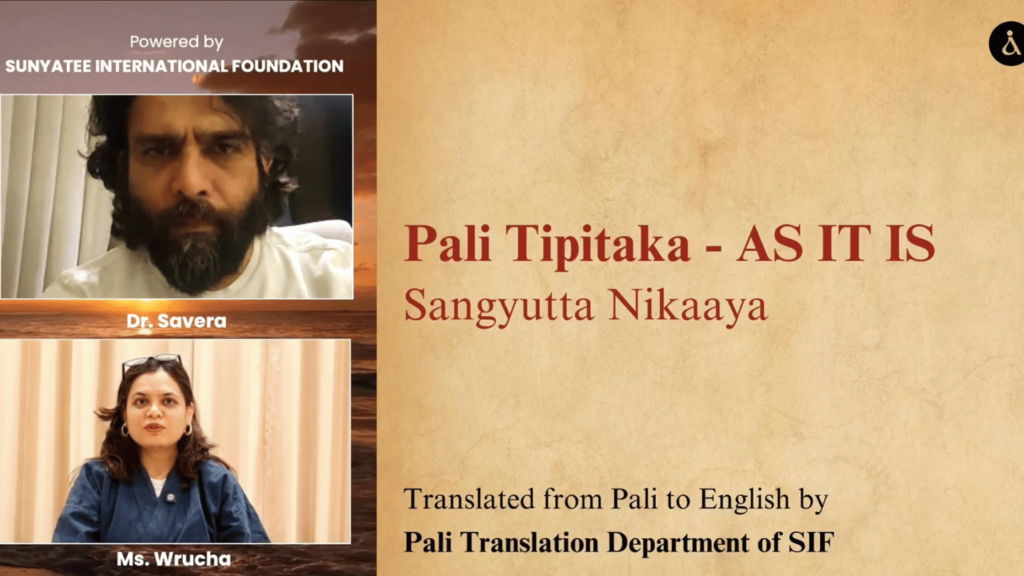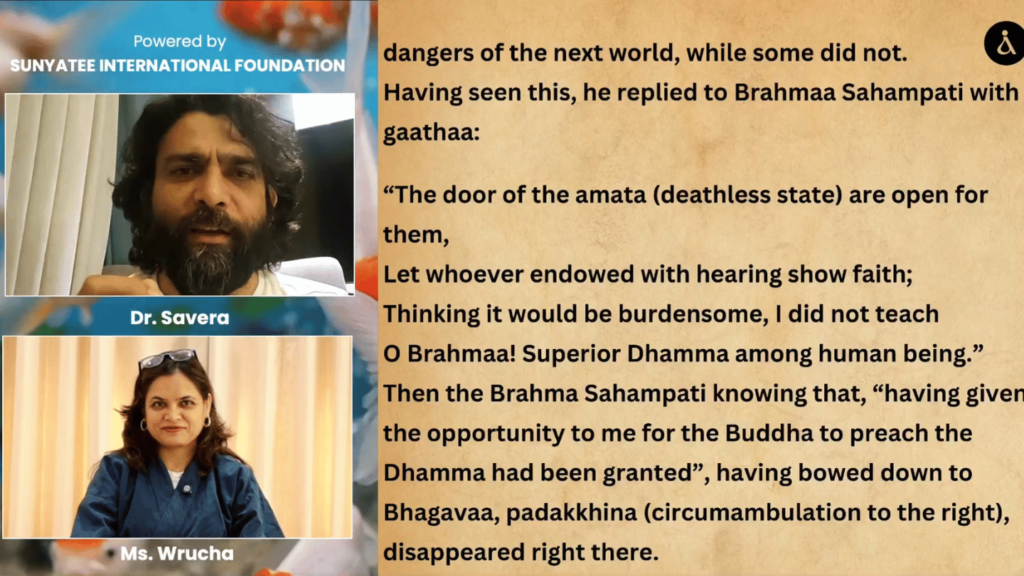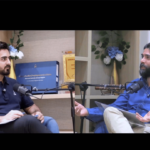The Brahma Cañasutta is a discourse from the Samyutta Nikaya, one of the collections of the Pali Canon, which is a part of the Sutta Pitaka. This sutta belongs to the Brahma Vagga (the chapter on Brahma), and in it, the Buddha teaches about the qualities of the Brahma-world and how one should engage in the right practice to experience liberation.
The concept of Brahma and Mara come from the ancient philosophies respectively. Brahma is the creator, who creates the universe and everything within it. Brahma is the creative force in the universe and is a creative energy .Mara is a buddhist concept representing the desire, temptation and obstacles to inner enlightenment.
Brahma, though exalted, is not exempt from the laws of samsara (the cycle of birth, death, and rebirth). The Buddha points out that beings like Brahma, despite their elevated status, are still caught in the cycle of suffering because they have not attained the ultimate liberation—nirvana.

One of the key aspects of the Brahma Cañasutta is the emphasis on the practice of mindfulness and concentration. The Buddha teaches that by cultivating these qualities, along with the other factors of the Eightfold Path, one can purify the mind and achieve the highest state of liberation, free from attachment and desire.
In the sutta, Brahma represents an ideal of purity, but it is clear that this is still based on the self-centered desire for inner power. The Buddha teaches that true liberation is not about accumulating power or reaching higher planes of existence, but about the cessation of self-centered desires and the cultivation of compassion for all beings.
The Buddha emphasizes that only through understanding the Four Noble Truths—seeing the nature of suffering, its origin, its cessation, and the path leading to its cessation—can one truly transcend even the most divine realms like Brahma’s.
The sutta suggests that despite their grandeur, the divine realms like Brahma’s are still subject to suffering and change. Liberation is not about attaining a higher existence but freeing oneself from all attachments and illusions.
The Gāravasutta (Samyutta Nikaya 6.2) is another important discourse in the Samyutta Nikaya, found in the Brahma Vagga (the chapter on Brahma). In this sutta, the Buddha teaches about the proper attitude toward respect, humility, and the qualities of a true practitioner. The word “gārava” translates to “respect” or “reverence,” and the sutta emphasizes the right way to understand and cultivate respect in one’s life.
The Buddha emphasizes that true worth is determined by one’s virtuous actions and qualities. A person’s dignity and value come from their moral conduct, understanding of the Dharma, and their ability to live in accordance with the Eightfold Path.
True wisdom is linked to humility. The wise person focuses on inner development through understanding the Dharma and cultivating virtuous qualities.The Buddha teaches that the appropriate object of respect is based on moral qualities and wisdom a person embodies.A practitioner must respect themselves by maintaining their ethical conduct and practicing the Dharma sincerely. This self-respect is what enables them to show genuine respect to others.
This teaching helps to build a sense of right relationship both within the community and in one’s personal practice, leading to a more authentic and profound life.

The Brahma Deva Sutta (Samyutta Nikaya 6.3) is a brief but profound discourse from the Samyutta Nikaya, part of the Brahma Vagga (the Chapter on Brahma). In this sutta, the Buddha engages in a conversation with a divine being, often referred to as a Brahma Deva. This encounter reveals key teachings related to the nature of divinity, suffering, and the true path to liberation.
The Brahma Deva, despite being a powerful celestial being, expresses a question about ultimate peace, which reveals a misconception common among those in heavenly realms: the belief that their exalted status places them beyond suffering. The Buddha teaches that suffering is not limited to human beings but pervades all realms of existence, even those considered divine. He points out that even the Brahma world is not free from the three marks of existence—impermanence, suffering, and non-self.
The Buddha explains that true liberation (nirvana) is not something that can be attained simply by being born in a higher realm. In fact, even beings in the Brahma realm are not free from the cycle of samsara (the cycle of birth, death, and rebirth) because their existence is still conditioned. The Buddha emphasizes that liberation can only be attained through the realization of the Four Noble Truths and the cessation of attachment to all forms of existence, including the divine.
The Buddha teaches that liberation is not found through the attainment of divine states, such as the Brahma world, but through following the Noble Eightfold Path. This path—comprised of right understanding, right intention, right speech, right action, right livelihood, right effort, right mindfulness, and right concentration—leads to the cessation of suffering and the realization of the unconditioned.The Brahma Deva, though wise, still embodies a temporary and conditioned existence, meaning that even beings in the highest celestial realms are bound by the laws of samsara. Only the unconditioned state of nirvana is free from suffering and impermanence.The Brahma Deva Sutta teaches that even the highest celestial realms, such as the Brahma world, are not immune to suffering and impermanence. The Buddha’s response to the Brahma Deva’s question reveals a fundamental truth in Buddhism: true liberation is not a matter of attaining a higher birth in a divine realm but of understanding the nature of suffering and following the path that leads to the cessation of suffering. This involves recognizing the impermanence of all existence and cultivating the wisdom and insight that come from following the Noble Eightfold Path.
By emphasizing the universal nature of suffering and the limitations of the divine realms, the Buddha directs his followers toward the ultimate goal: liberation through wisdom, mindfulness, and ethical living.
In the Bakabrahmasutta, Baka Brahma, a powerful and proud deity, questions the Buddha, expressing his belief that there is no more suffering in the world, and that he (Baka) is the supreme being who has attained the highest form of peace. He claims that he has transcended the cycle of birth and death, and that the universe is permanent and unchanging. Baka Brahma is confident in his belief that he is free from the suffering that affects other beings.
The Buddha responds by challenging Baka Brahma’s assertions, explaining that even his celestial existence is impermanent and conditioned. The Buddha teaches Baka Brahma that his views are based on delusion and that the true path to liberation is through wisdom, understanding the nature of impermanence, and following the Noble Eightfold Path.the Buddha points out that Baka Brahma’s perception is deluded. The Buddha teaches that all conditioned phenomena, including the Brahma realm, are subject to the laws of impermanence (anicca), suffering (dukkha), and non-self (anatta). Even divine beings like Baka Brahma, despite their apparent peace and power, are still bound by these laws.
In the discourse, the Buddha also emphasizes the importance of meditation and mindfulness in cultivating the wisdom that leads to liberation. By practicing right concentration, right mindfulness, and right understanding, one can pierce through the delusions of attachment to any realm, whether human or divine. The Buddha shows that the key to liberation is not through dwelling in any divine state but through transcending all attachments and perceptions of a permanent self.
The Bakabrahmasutta teaches an important lesson about the limitations of divine realms and the misconception that they are free from suffering or impermanence. Baka Brahma’s belief in the permanence of his existence is shown to be a delusion, and the Buddha guides him toward a deeper understanding of liberation. The Buddha explains that true liberation is not found in any divine or conditioned state but in the realization of the unconditioned state of nirvana. Through the cultivation of wisdom and the practice of the Noble Eightfold Path, one can transcend all forms of attachment and suffering, achieving lasting peace and freedom.
The Anyatarasutta (Samyutta Nikaya 6.5) is another discourse from the Brahma Vagga of the Samyutta Nikaya. In this sutta, the Buddha addresses a divine being (Brahma) who expresses a question about the nature of peace and liberation. The Anyatarasutta focuses on the distinction between worldly peace and the true, ultimate peace found in enlightenment.
The Buddha outlines that the way to achieve ultimate peace is by following the Noble Eightfold Path, which consists of:
- Right View (understanding the Four Noble Truths)
- Right Intention (commitment to renunciation, non-ill will, and harmlessness)
- Right Speech (avoiding lying, gossip, and harsh words)
- Right Action (ethical conduct in bodily actions)
- Right Livelihood (earning a living in a way that does not harm others)
- Right Effort (effort to prevent unwholesome states and cultivate wholesome ones)
- Right Mindfulness (developing awareness of the body, feelings, mind, and phenomena)
- Right Concentration (developing deep states of meditation)
By practicing these steps, one purifies the mind, overcomes delusion, and ultimately attains the final peace, which is the cessation of all craving, clinging, and suffering
To watch this session, please click the link below:




